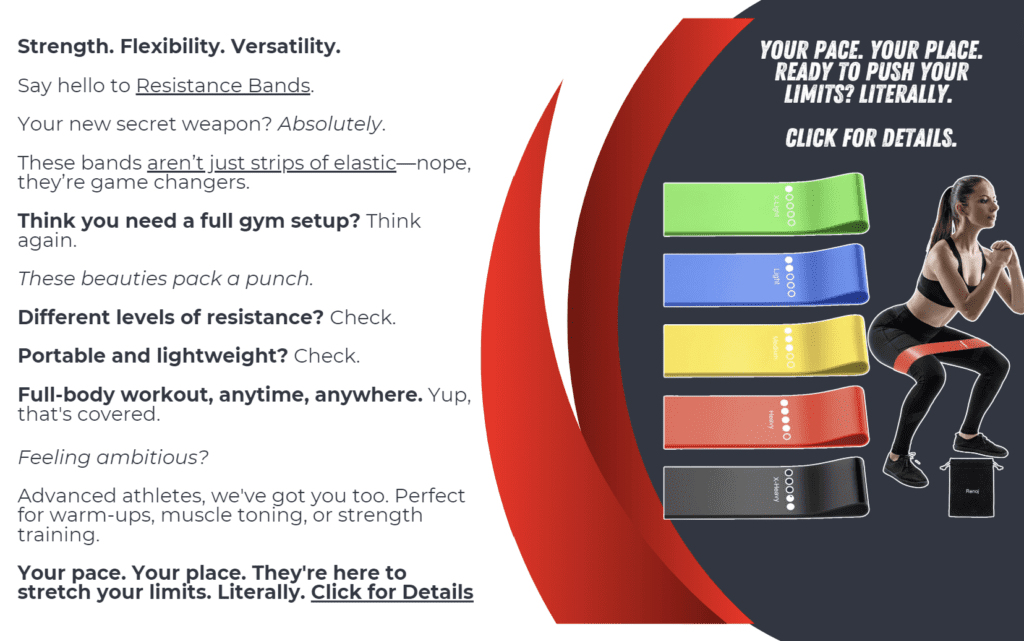Powerful Glute Lifting Exercises for Women
Transform your glutes with these expert-designed exercises for women. Gain strength and definition while enjoying the benefits of a more sculpted appearance.
In the world of fitness, the quest for stronger, more defined glutes is akin to the search for the Holy Grail. The gluteal muscles—comprising the gluteus maximus, medius, and minimus—not only contribute to a sculpted appearance but also play a crucial role in overall strength, stability, and injury prevention. This article explores a series of expertly designed exercises that can help transform your glutes.
The Anatomy of Your Glutes
Before diving into the exercises, let’s understand the anatomy of the glutes:
- Gluteus Maximus: The largest muscle in the body, responsible for the shape and movement of the buttocks.
- Gluteus Medius: Located on the outer surface of the pelvis, this muscle stabilizes the hip and pelvis during activities like walking and running.
- Gluteus Minimus: The smallest of the three, situated beneath the gluteus medius, aids in hip stabilization and rotation.
Warm-Up: Priming the Muscles
A proper warm-up is essential to prepare the muscles for the workout ahead:
- Dynamic Stretches: Perform leg swings and hip circles to increase blood flow and flexibility.
- Glute Activation: Engage the glutes with exercises like clamshells and glute bridges to ensure they’re firing correctly during the workout.
Exercise 1: Squats
Squats are a fundamental exercise that target the entire lower body, with a significant focus on the glutes:
- Basic Squat: Stand with feet shoulder-width apart, toes slightly turned out. Lower your body as if sitting back into a chair, ensuring knees track over toes. Return to standing.
- Variations: Try goblet squats holding a weight at your chest or sumo squats with a wider stance to emphasize different parts of the glutes.
Unexpected Anecdote: The Ancient Squat
Legend has it that ancient Greek wrestlers would perform squats while balancing on stone pillars to enhance their strength and stability. This age-old exercise continues to be a cornerstone of modern strength training.
Exercise 2: Deadlifts
Deadlifts are another powerhouse move for the glutes, engaging multiple muscle groups:
- Basic Deadlift: Stand with feet hip-width apart, holding a barbell or dumbbells in front of your thighs. Hinge at the hips, keeping the back flat, and lower the weights to the ground. Drive through the heels to return to standing.
- Variations: Romanian deadlifts keep a slight bend in the knees, focusing more intensely on the hamstrings and glutes.
Exercise 3: Hip Thrusts
Hip thrusts isolate the glutes, making them an excellent exercise for building strength and definition:
- Basic Hip Thrust: Sit on the ground with your upper back against a bench, knees bent, feet flat on the floor. Place a weight (barbell or dumbbell) across your hips. Drive through the heels to lift the hips until the thighs are parallel to the ground. Lower and repeat.
- Variations: Single-leg hip thrusts challenge balance and engage the glutes even more deeply.
Exercise 4: Lunges
Lunges provide a dynamic movement pattern that targets the glutes, quadriceps, and hamstrings:
- Basic Lunge: Step forward with one foot, lowering the back knee toward the ground while keeping the front knee aligned over the ankle. Push through the front heel to return to standing.
- Variations: Try reverse lunges or walking lunges to increase the intensity and engage the glutes from different angles.
Exercise 5: Glute Bridges
Similar to hip thrusts but without the bench, glute bridges are perfect for activating and strengthening the glutes:
- Basic Glute Bridge: Lie on your back with knees bent, feet flat on the floor. Lift your hips by squeezing the glutes, forming a straight line from shoulders to knees. Lower and repeat.
- Variations: Add resistance bands around the thighs or place a weight on your hips for added challenge.
Cool Down: Recovery and Flexibility
After working the glutes, a cool-down helps promote recovery and flexibility:
- Static Stretches: Focus on stretching the glutes, hamstrings, and hip flexors.
- Foam Rolling: Use a foam roller to release any tension in the muscles and reduce soreness.
Frequently Asked Questions
Q1: How often should I train my glutes?
For optimal results, aim to train your glutes 2-3 times per week, allowing for rest days in between to promote muscle recovery.
Q2: Can these exercises help with lower back pain?
Yes, strengthening the glutes can improve posture and reduce strain on the lower back, potentially alleviating pain.
Q3: Do I need equipment for these exercises?
While some exercises benefit from weights or resistance bands, many can be performed using just bodyweight, especially for beginners.
Q4: How long before I see results?
Consistency is key. With regular training and proper nutrition, noticeable improvements can occur within 4-6 weeks.
Q5: Are these exercises suitable for beginners?
Absolutely. Start with bodyweight versions of each exercise and gradually add weights as you build strength and confidence.
Actionable Tips
- Consistency: Establish a regular workout routine, aiming for 2-3 sessions per week focused on glute exercises.
- Progressive Overload: Gradually increase the weight or resistance to continuously challenge your muscles.
- Form First: Prioritize proper form over heavy weights to prevent injury and maximize effectiveness.
- Variety: Mix up your exercises to target the glutes from different angles and prevent plateaus.
- Nutrition: Support your workouts with a balanced diet rich in protein, healthy fats, and complex carbohydrates.
In conclusion, transforming your glutes requires a combination of targeted exercises, consistency, and proper form. By incorporating these powerful glute lifting exercises into your fitness routine, you can gain strength, enhance definition, and enjoy the myriad benefits of a more sculpted appearance. So, lace up your sneakers, grab those weights, and get ready to lift your way to stronger, healthier glutes.

